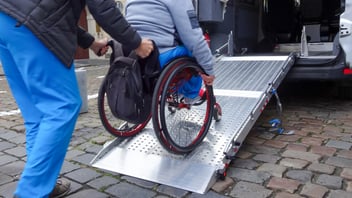How hospitals are improving length of stay outcomes

Reduced Length of Stay (LOS) is often used as an indicator of hospital efficiency, which can equate to reductions in costs per discharge. In addition, decreased LOS can lower risks of infections, side effects from medications, and lower mortality rates.
Reduced length of stay associated with complications
However, for surgical patients, reducing LOS can increase complications after patients leave the hospital – and it has been on the rise. Between 2014 and 2019, surgical LOS dropped from three days to two days. During that time, post-discharge complications rose by approximately 12%.
The relationship between length of stay (LOS), and post-surgical discharge complications was a topic presented at The American College of Surgeons (ACS) 2021 virtual Clinical Congress. According to Research Fellow Ruojia Debbie Li (Northwestern University, Feinberg School of Medicine, Chicago), “There is a black hole that needs to be addressed between the time the patient gets discharged from the hospital to their postoperative visit. Currently, we are using a wait-and-see model where we are waiting for surgical patients to approach us with any concerning signs and symptoms.”
The role of patients
However, patients and/or their caregivers don’t often recognize early symptoms of complications. Ryan P. Merkow, MD, MS, FACS, Assistant Professor of Surgery at Northwestern Medical, recommended educating patients and family members so they can identify potential complications, and increased monitoring of high risk patients.
Growth in telemedicine
With the wider use of telemedicine, there has been more attention paid to post-operative tele-monitoring. The US Department of Veteran Affairs made this a performance goal for the fiscal years 2014–2020, to increase patient access to virtual technology.
An article by International Journal of Environmental Research and Public Health stated that telemedicine can bring increased patient safety through the monitoring of life parameters, and allowing for regular, remote contact with specialists. It can contribute to shorter convalescence, as well as reducing the risk of complications.
Virtual post-hospital care improves outcomes
During the pandemic, the use of remote technology for post-hospital patient care has become prevalent. Researchers in Ontario, Canada undertook a trial to determine if virtual care with remote automated monitoring (RAM), in addition to standard care, could extend the days that patients remained alive after being discharged for non-elective surgery. The findings indicate that virtual care with RAM shows promise in improving outcomes for patients, as well as increasing health system efficiency.
An article released by Brigham and Women’s Hospital reported that their Home Hospital Program (HHP) had reduced provider stress, and reduced costs by 38% compared to inpatient care. The HHP included remote patient monitoring, and telehealth connections to care teams, physicians, nurses, and specially trained paramedics.
According to David Levine, MD, MPH, MA, of the Division of General Internal Medicine and Primary Care, “Home hospital programs can create much-needed capacity by building on programs that many hospitals already have in place, and do not require the financial and staffing resources of other approaches such as field hospitals.”
About Backline
Designed by actual clinicians, Backline is a healthcare-specific messaging platform that helps manage the complexity and urgency of today’s clinical environment. In addition to providing telehealth and secure communications, we deliver a virtual workspace that brings together providers to collaborate across units and disciplines.
For health systems, Backline replaces multiple point solutions with a single platform that elevates their efficiency, while increasing clinician and patient satisfaction.




